|
TRANSLATE THIS ARTICLE
Integral World: Exploring Theories of Everything
An independent forum for a critical discussion of the integral philosophy of Ken Wilber
 Brad Reynolds did graduate work at the California Institute of Integral Studies (CIIS) before leaving to study under Ken Wilber for a decade, and published two books reviewing Wilber's work: Embracing Reality: The Integral Vision of Ken Wilber (Tarcher, 2004), Where's Wilber At?: Ken Wilber's Integral Vision in the New Millennium (Paragon House, 2006) and God's Great Tradition of Global Wisdom: Guru Yoga-Satsang in the Integral Age (Bright Alliance, 2021). Visit: http://integralartandstudies.com Brad Reynolds did graduate work at the California Institute of Integral Studies (CIIS) before leaving to study under Ken Wilber for a decade, and published two books reviewing Wilber's work: Embracing Reality: The Integral Vision of Ken Wilber (Tarcher, 2004), Where's Wilber At?: Ken Wilber's Integral Vision in the New Millennium (Paragon House, 2006) and God's Great Tradition of Global Wisdom: Guru Yoga-Satsang in the Integral Age (Bright Alliance, 2021). Visit: http://integralartandstudies.com
Ken Wilber's Line FallacySpiritual Choices, Part 3Brad Reynolds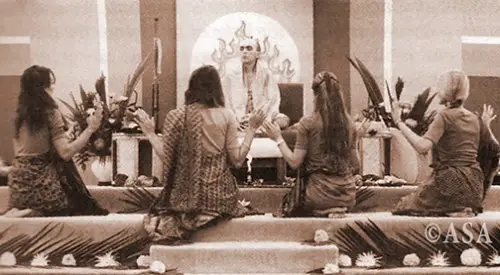
Adi Da Samraj and the Mandala of four women renunciates at the Mountain of Attention, 1986
K en Wilber's Integral Psychology is based upon an “AQAL” Metatheory, or one that includes the interiors and exteriors of individuals and collective cultural-worldviews and social organizations—the “four quadrants” or the “All Quadrants” (of “A-Q”)—as they evolve and develop through various progressive “basic structures” or stages and levels of conscious awareness—and the “All Levels” (of “A-L”)—the spectrum of consciousness growing from prepersonal to personal to transpersonal domains (roughly corresponding to Adi Da's “Seven Stages of Life” model). This model or map of the evolving human psyche, Wilber correctly claims, also needs to include “lines, states, and types” to be fully integral and complete, to be AQAL. The developmental “lines” can be fluidly pictured as “streams,” and in a similar fashion, the “basic structures” can be compared with “waves” (a metaphor Wilber uses). These relatively quasi-independent lines or streams proceed to weave their way through the relatively independent structures or waves that altogether creates the pluridimensional, nested, and interactive human psyche. These lines are forms of “intelligences,” such as “emotional intelligence” (EQ), which also include cognition, moral, affective, linguistic, kinesthetic, somatic, and interpersonal capabilities. These lines are “relatively independent,” since, as Wilber explains, “they can develop independently of each other, at different rates, with a different dynamic, and on a different time schedule.”[1] The integral psychologist explains these overlapping dynamics in A Theory of Everything (2000):
One of the most striking items about these multiple modules or streams [lines] is that most of them develop in a relatively independent fashion…. But on balance, many of the streams develop at their own rate, with their own dynamic, in their own way. A person can be at a relatively high level of development in some streams, medium in others, and low in still others. Overall development, in other words, can be quite uneven.[2]
In the past couple of decades, Wilber has used this model to critique ancient and modern Gurus by plotting their developmental “lines” or “streams” on what he calls an “integral psychograph”—a graph depicting the different lines on a horizontal axis while the basic levels are depicted vertically in order to chart the stage of growth reached by each quasi-independent line. Naturally, Wilber focused on Adi Da Samraj (1939-2008) since at one time he was such an ardent supporter, but now he suggests Adi Da is very high in some streams, while quite low in others. However, I maintain we need to take into account Adi Da's entire life and all of his relationships and functions to get a clearer picture of his psyche and developmental status. This is something I believe Wilber has failed to adequately do thus coming to his erroneous conclusions about Adi Da. Wilber's main complaint with Adi Da is that the Sat-Guru had an underdeveloped “emotional-sexual” line while maintaining a very high spiritual one. The integral pandit has claimed: “[Gurus] may have been 'one with the world,' but their capacity in that world would remain relatively immature or even dysfunctional and pathological.”[3] This is, of course, a blanket statement intended to address a wide range of inauthentic Spiritual Teachers because it's a topic that certainly needs to be addressed, especially in the modern world; but this assessment does not apply to Adi Da Samraj. This is why we must be careful in our adjudication of spiritual authorities since too often outward actions that differ from the conventional perspective don't fully reflect the inner value being given (such as with “Crazy Wisdom” [see Part 4]). People need to discern the differences—to see for themselves, to dig deeper than common reactions, and not to simply read superficial (or distorted) stories on the Internet (or complaints in Wilber's recent books) and then turn away. For example, the late integral teacher and speaker Terry Patten, who co-authored the book Integral Life Practice (2008) with Ken Wilber (and others), commented (in 2018) when being interviewed about his sacred relationship with Adi Da: “I do not reach for Wilber's line theory in order to explain Adi Da… What I saw in Adi Da was… a potency… that is really not available anywhere [else], and I remain grateful and positive…. I think reducing these great beings either to a pathology or an ontological deification that we have to build a mythology around reduces our options tremendously. If we have been touched by something Transcendental [such as being in the Company of Adi Da] then it has initiated us and asked us to become a reflection of the best human qualities that our nervous systems can conduct and express. And that is all I need to know, really.”[4] As Patten suggests, Wilber's assessment that Adi Da is deficient in his overall personality, or specifically in his emotional-sexual “line,” is not an accurate one thus diminishing the real possibilities that a Guru like Adi Da offers everyone. If someone studies the entire scope of evidence, they'll soon see Wilber's opinions are based more on his own personal reactivity and karmic play with the Siddha-Guru rather than any clear judgment about Adi Da. Basically, Wilber's critical response to Adi Da's sexuality began after the 1985 lawsuits that brought considerable negative press coverage but resulted in no legal charges or court actions (despite what some websites imply).[5] Many critics have focused on only a few individuals' negative reactions and then outright condemn Heart-Master Da as being inauthentic and deceptive. Yet, the overall evidence proves this is a false accusation when placed in a larger context. To address this issue and plot the different developmental strengths and weaknesses of each individual, Wilber, as mentioned, devised a conceptual scheme for measuring the various “lines” or “streams” making up a person's psyche as they evolve through the various “levels” or “waves” (stages) in personal development—what he calls an “integral psychograph.”[6] Wilber summarized in Integral Psychology (2000):
The point of… what I call an “integral psychograph” is that you can track the different developmental lines (or streams) as they move through the various levels (or waves) of the Great Nest [of Being]. You can be at a higher, transpersonal, or “spiritual” level in several lines, and at a lower, personal, or “psychological” level in others, so that both spiritual and psychological development overlap—and the separate spiritual line(s) can be relatively high or low as well. All of these streams and waves are navigated by the self (or the self system), which has to balance all of them and find some sort of harmony in the midst of this mélange. Moreover, something can go wrong in any stream at any of its waves (or stages), and therefore we can map various types of pathologies wherever they occur in the psychograph—different types of pathologies occur at different levels or waves in each of the lines.[7]
Let us be clear from the outset: this is only a conceptual model built upon psychological evidence gathered from the general modern/postmodern population of the Western world, thus it fails to fully take into account the interactive nature of the whole psyche (although it attempts to do so). And also note that Wilber claims it is “the self (or self system)” that is navigating and balancing this “mélange” of attributes and psychic forces. Yet, what occurs when the self system (of ego-I) is actually transcended in the True Self (Atman), which the mystics universally claim is the definition of Enlightenment? Such an integral psychograph, therefore, is only a map, a model, not the territory of the psyche itself, useful only for highlighting certain features of the landscape, not revealing the region itself. For example, according to Wilber, the psychograph in the chart below is for, say, an average postmodern person showing the various strands of the psyche and their different “altitudes” or level of attainment: 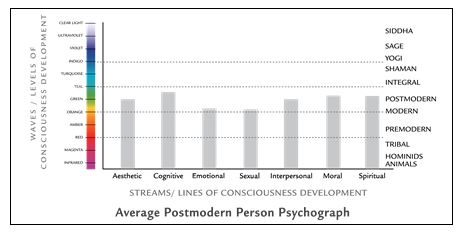
In order to account for certain people—our “Spiritual Heroes” (or particular “Gurus”)—who have extraordinary spiritual or intellectual abilities, but lack in other areas of human maturity, Wilber devised this schema to better explain how a person can be spiritually Awake yet still seem to have “emotional” or “sexual” issues (such as desires for sexual relations with people deemed inappropriate, such as with students or devotees). From Wilber's view, therefore, we might plot Adi Da's psychograph like this: 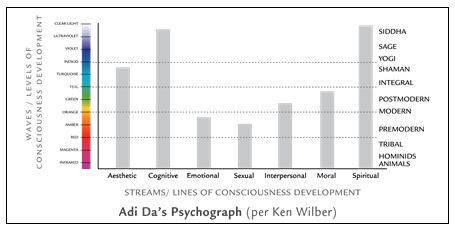
By following this mapping scheme, Wilber suggests that Adi Da is deficient in his overall personality, or specifically in his emotional-sexual “lines,” yet I maintain this view is not an accurate (but a distorted) appraisal. Consequently, many critics have followed Wilber's lead in suggesting how Adi Da, as one critic put it, “can be both a saint and a sinner, a highly evolved person who nevertheless has been unable to overcome some very serious human character flaws… Ken Wilber thinks so, and in fact uses Adi Da as Exhibit A [proving]… that spiritual development is not necessarily even, but evolves through a number of different streams [lines] with progress in some often greatly surpassing that in others.”[8] This has become the standard critique at this time (the early decades of the new millennium) for avoiding abusive “Spiritual Masters” (from Andrew Cohen to Ösel Tendzin to Sogyal Rinpoche, et al.), thus it might have some validity for many inauthentic “gurus” and misbehaving spiritual teachers. But, in my opinion, in relation to Adi Da Samraj it is an illusion created by the mind to avoid relationship with a genuine and authentic Guru-Adept, let alone a potentially incarnated Avatar. In this case, I suggest the psychograph pictured below is a much more accurate description of Adi Da (where the “sexual” line fades out in the highest Stages of Life as celibacy and renunciation often take over unless tantric engagements are enacted as expressions of love in its fullest sense, i.e., the true Tantra Yoga of “One Taste”): 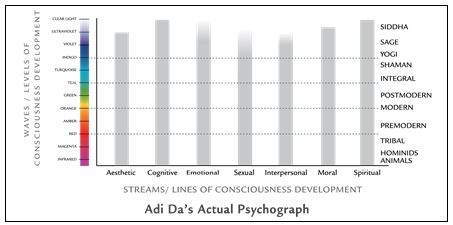
If someone studies the actual evidence, they'll soon see Wilber's assessment (taken from a distance) is based more on his own personal karmic play and reactivity with this particular Guru-Adept rather than any clear judgment about Adi Da. In addition, Wilber was also addressing the pervasive phenomena of “clergy sexual misconduct” (as it's now legally called), which is a fallibility on the part of too many religious and spiritual leaders and priests. This is in fact a serious issue that creates victims so it must be appropriately (and legally) addressed. Hence judgments must be based on facts and seeing the whole picture. In this case, I need to point out that Ken Wilber never spent any personal time around Adi Da in person, only availing himself to Darshan once—so how much can he really know? He has heard stories and some facts but often from an incomplete (and biased) point of view. As I've mentioned, Wilber's deprecatory response to Adi Da's sexuality began after the 1985 lawsuits and public outcry that brought negative press (and wild stories), yet resulted in no legal charges (unlike people are often misled into believing after reading some harshly critical websites).[9] Critics, who were also almost always not personally present, like to use a series of distorted facts to simply condemn Adi Da as being fraudulent and misleading.[10] Yet, the span of evidence, supported by the confessions of thousands of people who have been in Adi Da's Company, prove these accusations are invalid when placed in the proper social (and spiritual) context and when seen as a whole. True, each story might have an element of truth in it—they are not totally fabricated—but they have usually been exaggerated and misappropriated.
If someone studies the entire scope of evidence, they'll soon see Ken Wilber's opinions are based more on his own personal reactivity and karmic play with the Siddha-Guru rather than any clear judgment about Adi Da.
Crazy-Wise Teaching DemonstrationsL et me also be clear: I am not of the camp that says Adi Da made no mistakes, as if everything he did was righteous and correct, for he was human, even if Enlightened. Unbounded freedom is bound to make errors. Nevertheless, there must always be some leeway, in my opinion, to allow these Enlightened beings to do their work outside of conventional norms. In the vast majority of cases, the Adept's actions are in fact justified and serve as important “Teaching lessons” that are offered with love, compassion, and wisdom. This is a fact, not opinion. Many thousands of people experienced just this with Adi Da. In fact, there are websites—such as adidaupclose.org, adidacontroversies.org, and beezone.com—that tackle these issues head on with a more accurate and sober assessment (yet without whitewashing or outright denying the accusations). This fact is simply something the critics refuse to address. True, Adi Da's “Crazy-Wise” behavior, especially in the first decade (1973-1983) of his Teaching-Work (under the name “Bubba Free John” and “Da Free John”) was more extreme as he deliberately tried to shake his students out of their conventional egoic-habit patterns [see Part 4]. It was also, after all, the 1970s—the era of “sex, drugs, and rock and roll”—so the people approaching him were in the mood of experimentation and ready to break cultural norms; it's really impossible to communicate the worldview of those times without having been there. Those times are nothing like it is today. Besides, Adi Da's “Crazy Wisdom” was documented and never hidden—he even had a magazine out with this title—although the more erotic, consensual teaching lessons were discretely conducted with a close group of more advanced devotees. Plus, I notice that the critics overlook and fail to recognize (or discuss) the strict disciplines and demands for sadhana that were also required among all devotees, ones that Adi Da himself practiced. Dionysian parties of ecstasy were soon followed by Apollonian restraint to teach the futility of any experience as falling short of real God-Realization and the equanimity of a dedicated and true spiritual lifestyle. These were “Teaching-Demonstrations,” as the Siddha-Guru called them, not personal preferences for indulgence; this is what the evidence truly shows. Time and time again Adi Da demonstrated his ability to transcend any preference, whether ascetic or tantric, as many other genuine God-Realized Adepts in human history have also done. In fact, it is a sign of authenticity, not debauchery. Every time he appeared before his devotees for talks or Darshans (often silent meditation occasions where hundreds of people would sit still in meditation for several hours), he was as clear and sober as you will ever see any human being. Watch the videos; see for yourself. He was always the Man of Understanding, the “Laughing Man” (as another magazine titled him), a “divine distraction” for any serious devotee to access and use for actual Divine Communion with Real God that is “always already the case” (or Reality Itself). Only the ego, only “Narcissus”—the activity of “avoiding relationship”—would claim otherwise. 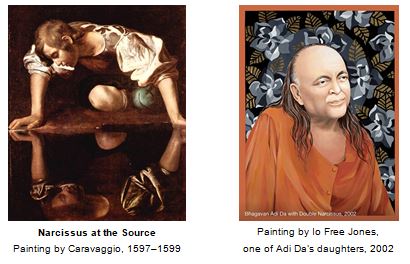 As I continue to maintain, the critics' perspective vastly overlooks Avatar Adi Da's Divine Heart-Transmission and his transformative function as an Adept-Guru [see Part 2]. They even downplay the significance of his vast body of astute writings and spontaneous talks, although some critics do praise his books while condemning his character, which doesn't make much sense. They focus on what serves their own purposes instead of understanding the whole picture and power of a genuine Siddha-Guru. They choose to overlook (or dismiss) Adi Da's Divine Gifts (freely given to all). Additionally, they often lack a discriminative understanding about Tantra Yoga and “Crazy Wisdom,” which is, admittedly, a difficult topic for modern people living in today's conventional frameworks and worldviews. Such critics purposely gloss over precedents in the Great Tradition of eccentric Adepts saying they're outdated in our modern democracies. Yet, remember, esoteric spirituality in the past did not happen in meeting halls or market squares, but in sanctuaries and hidden caves or deep in forests away from the bustle of city life and conventional thinking (in any era). Perhaps it's better if we revise our point of view, since as the esteemed historian of religions, Professor Jeffrey Kripal, points out: “We need to develop a new paradoxical hermeneutic of the Guru (or Mystic) that does not commit the fallacy of conflating the mystical with the ethical but is, at the same time, willing and able to advance honest and public ethical criticism based on clear, if always culturally relative, moral principles such as integrity and freedom of the individual human being.”[11] Adi Da always honored the integrity of any individual's freedom and agency; no one was ever forced to do anything they didn't choose to do. In fact, unlike many cults where it's easy to join, hard to leave, in Adi Da's ashram it is easy to leave, but difficult to enter (due to the disciplined requirements and lifestyle demanded of true sadhana). Indeed, this is a principal reason why membership is low (i.e., it requires disciplines). Thus, all of these important factors need to be taken fully into account for an accurate assessment of Guru Yoga and Satsang in the Integral Age. People also overlook (or criticize) that it was always openly admitted (not hidden) that the man Adi Da Samraj, the Great Spiritual Adept, had intimate sexual relations with some of his closest female devotees. Indeed, without question, Adi Da was polyamorous (preferring consensual nonmonogamy), but this fact does not disqualify his authenticity as a genuine Siddha-Guru. Nor is it evidence of any wrongdoing, as his critics have harshly suggested. Adi Da was an extremely attractive and enticing man, engaging and full of laughter, a real human being alive as the whole body, which includes genitals and sexual orgasms, radiant with humor and sublime beauty. Adi Da and His Teaching was (and is) openly and thoroughly “body-positive” and “sex-positive” and “life-positive” (unlike many ascetic Yogis) regardless of the puritanical wishes of some of his critics (who seem to prefer celibate monks or monogamous teachers). Yet, this approach is set within the context of spiritual sadhana and the practice of love and compassion (and ego-transcendence, not self-indulgence). Obviously, Bhagavan Adi Da never claimed to be a celibate renunciate, though for extended periods he practiced that exercise as well; nor was he a libertine fool simply engaged in sensuous orgies (although yes, there were some instances of multi-partnered consensual sexual play, especially in the first few years when he was “Bubba,” acting more as a friend or “brother”). Most important, in all his sexual play the Tantric Master Adi Da was always and only motivated by love for his devotees; it was not self-centered indulgence (according to those closest to him). This simple truth seems difficult for some people to comprehend but that doesn't change reality.
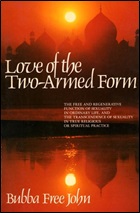
In Adi Da's Company, people learned life lessons and came to better understand themselves, not just gain exotic or erotic experiences. He was dedicated by a sincere love for those around him helping them to realize their “always already” Enlightened State of Happiness including a deep awareness about the truth of God as Absolute Love-Bliss that he called “the Heart”. Nonetheless, Adi Da's sexual relations and tantric skills, as well as his incredible yogic powers and siddhis (including the conductivity of kundalini forces), were known to his students if anyone cared to investigate or ask. Granted, some didn't know (for they were more interested in his spiritual teachings), but it wasn't hidden or lied about either. Nonetheless, his very loving recommendations about “sexual communion” for his devotees, with entire books addressing the matter—such as Love of the Two-Armed Form (1978)—are some of the sanest communications about sexual relations I have ever read (and where, by the way, he usually, but not always, recommends a single “intimate” partner in marriage).[12] Yet his critics consistently overlook all of these facts since they're mostly motivated by their own egoic desires and misunderstandings (usually entailing the avoidance of Gurus altogether). 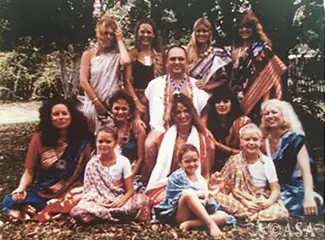
Adi Da with the original Gurukula and daughters, early 1980s
Let's be realistic: Adi Da Samraj was a Tantric Master, in the true (and traditional) sense of its meaning, for he embraced the world, including women (since he was heterosexual) as well as transcending it with complete nonattachment (as his intimate relationships also clearly show). We need to read and hear all of the evidence, not just tales from disgruntled and angry dissidents, but from his real devotees. Then we need to look at our own emotional-sexual tendencies (and problems) and fears and reactions to get a clearer (and more real) picture of Adi Da's “emotional-sexual” line of development. Even Wilber couldn't digest it all properly, proving Adi Da was evoking egoic reactions that need to be radically understood and transcended. Unfortunately, for Ken (and all of us), Wilber never became a genuine devotee after praising Adi Da to the highest degree in the first decade or so after their introduction, for example:
The event of [Adi Da Samraj] is an occasion for rejoicing, for without any doubt whatsoever, he is destined to become the first Western Avatar to appear in the history of the world. His Teaching contains the most concentrated wealth of transcendental wisdom found anywhere, I believe, in the spiritual literature of the world, modern or ancient, Eastern or Western.[13]
In any case, even an Avatar, whether a living woman or man (or any evolved enlightened being), has the natural and inalienable right to have intimate relationships and sex with multiple partners (if they so choose), provided it is consensual and desired by all adult participants (and, in Adi Da's case, it always was). If no laws were broken (and they weren't): case closed. Therefore, we must take into account all of these factors in our overall assessment of this American-born Divinely Enlightened Adept-Realizer, a genuine Siddha-Guru for the new millennium, and stop being overwhelmed by lurid stories broadcast by distressed critics and people who don't really know what was taking place in His Company at his sacred Sanctuaries. The concern for some people, however, isn't just that sex (and love) was consensual, but that maybe there was a violation of “power dynamics” between the authority (guru) and student (devotee). The modern moral ethics of modernity (which emphasize individual freedoms and autonomy) suggests that consent (developed via self-esteem and mutual respect) is sufficient to warrant a wide variety of human interactions (including all types of sexual behavior). However, postmodern value-ethics (which are more concerned with pluralistic equality) suggests that power dynamics, such as those between a teacher and student, or guru and devotee, must be taken into account since there's usually an advantage given to the dominant authority leading to possible exploitation. For the modern Guru (often a traditional Eastern authority) practicing in the West, this becomes important (and possibly more problematic) since the potential student has often been raised with modern/postmodern values of egalitarianism and independent thinking that needs to be honored and integrated. As postmodern philosopher Michel Foucault noted, power is a structural expression of “a complex strategic situation in a given social setting” that requires both constraint and enablement.[14] In other words, power over another person need not necessarily involve force or the threat of force (coercion) to exert influence on how someone behaves. This is obviously true in many social situations, from the workplace to schools to the military to the legal system, and, of course, in families. As a result, some Westerners have questioned whether any “teacher” or “Spiritual Teacher” and Guru should ever have sexual relations with those who look up to them as an authority, whether good or bad. There are some justifications for these concerns, particularly in teacher-student, therapist-client (or priest-child) relationships. This is especially true since these power dynamics are governed by specific legal laws making it illegal to cross those boundaries for it often creates serious psychological damage. A guru-devotee relationship, however, is somewhat different since by its nature it's more encompassing and not phase-specific or temporary (in most cases). Some, however, would argue that this makes it even more important not to cross this boundary of separation between authority and subordinate. Nonetheless, ego transcendence is the modus operandi of genuine Satsang, so both parties have consented to be tested in service to a greater understanding, and, ultimately, God-Realization. When done under the guidance of a genuine Guru this isn't brainwashing, as the historical record of Awakened Adepts verifies; I suggest we learn to tell the difference. Only then can we better adjudicate what is actually taking place: real authenticity in the vertical transformation of consciousness [see Part 1] or mere cultic fascination with charismatic authorities. Consequently, such contemporary evaluations cannot be the final word or last judgment since the profundities of life and its multifarious relations involve the entire spectrum of human potentials. In the end (and at all times), adults have the final say about doing what they think is best for themselves (unless the greater good of the collective might be involved). This becomes particularly acute in the transpersonal mystical Stages of Life—the “farthest reaches of human nature”—as authentic Tantra Yoga proves (yet which is always practiced under the guidance of a genuine Lama or Adept-Guru). Real Satsang offers real God-Realization so we in the modem world—who generally know nothing about authentic Satsang—should be more cautious in our assessments and judgments acting as if only the modern/postmodern worldview is the correct one. Only in valuing the wholeness and sacredness of all human possibilities does real spiritual life and understanding take place. Therefore, we must allow some fluidity in our interactions with these Awakened Adepts who transcend all of the developmental stages (and limitations) of certain societies and their moralistic worldviews. Nevertheless, love, care, compassion, justice, and beauty are the highest moral and ethical ideals governing any personal or social relations. A true Guru always exudes these benign and radiant qualities, as did Avatar Adi Da Samraj.
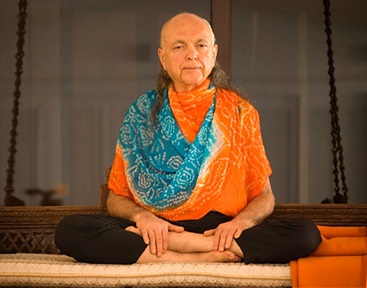 NOTES
Images of and quotations by Avatar Adi Da Samraj are copyrighted and managed by The Avataric Samrajya of Adidam Pty Ltd., a trustee for The Avataric Samrajya of Adidam (ASA).
All rights reserved.
Brad Reynolds' new book: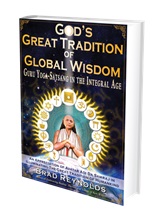 Guru Yoga-Satsang in the Integral Age — An Appreciation of Avatar Adi Da Samraj in Illuminating The Great Tradition of Humankind This book is NOW available on Amazon.com as a Color hardback or B&W paperback or eBook: See Brad's YouTube channel — GodsGreatTradition With an introductory video introduction by touring the Table Of Contents, please see: GODS GREAT TRADITION PROMO 2 This book defies many taboos. It unpacks the great tradition of spiritual transmission and the unique critical role of truly enlightened beings. And it advocates, in a full-throated and whole-hearted manner, for my Root-Guru, Adi Da Samraj, in a way that stands in that larger universal great tradition. We're all social creatures, who have internalized these taboos, so some readers may have reactions, and it may be necessary to persist despite them. But if you do, with an open mind and heart, this book will help you to recognize something profoundly important. "A Tour de Force" is the best way to describe the great work that Brad Reynolds has done with God's Great Tradition of Global Wisdom. It reminds me of the great classic The Passion of the Western Mind by Richard Tarnas, but Reynolds' opus is more thorough, deeper, and more inclusive. Of course, much of this depth and penetrating wisdom is achieved by drawing heavily on the Teachings he elucidates and illustrates, especially the Sage-Wisdom of Avatar Adi Da. Not only will the reader find a high-class education of a host of traditions, they will be treated to a panoply of fabulous, easy-to-grasp illustrations and images. A MUST for any student of the Great Tradition of humankind's spiritual inheritance.
|